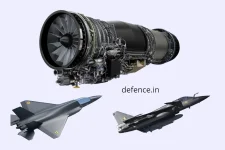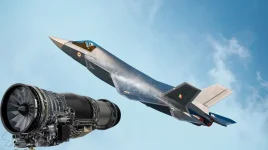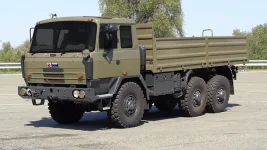- Views: 385
- Replies: 13
India's long-standing effort to develop an indigenous jet engine has received a major boost, as the Gas Turbine Research Establishment (GTRE) has reportedly secured new government funding.
This financial injection is aimed at completing the final certification stages for the Kaveri Derivative Engine (KDE), with a target to have it flight-certified by 2026 for its intended role as the powerplant for the upcoming Ghatak stealth unmanned combat aerial vehicle (UCAV).
To achieve this critical milestone, the Bengaluru-based GTRE, a key laboratory under the Defence Research and Development Organisation (DRDO), has formally requested a Light Combat Aircraft (LCA) Tejas from its limited series production batch to serve as a flying test bed for the engine.
A New Purpose for the Kaveri
The Kaveri engine program was first launched in the late 1980s with the ambitious goal of powering the LCA Tejas fighter jet.However, the original engine faced numerous technical hurdles and was unable to produce the required thrust for a modern combat aircraft, leading India to select the American General Electric F404 engine for the Tejas.
Despite this setback, GTRE continued to refine the design, leading to the current Kaveri Derivative Engine.
While its dry thrust of approximately $49 kN is not sufficient for a manned fighter jet, which typically requires 75 to 80 kN of thrust, it has been identified as a perfect match for the requirements of India's secretive Ghatak UCAV program.
This unmanned aircraft, designed for stealth and deep penetration strike missions, prioritises reliability and efficiency over the high-thrust performance demanded by fighters.
From Transport Aircraft to Fighter Jet Trials
The KDE has already undergone foundational flight trials aboard a modified Ilyushin Il-76 transport aircraft in Russia. These tests provided essential data on the engine's core performance and functionality. However, a transport plane cannot replicate the extreme conditions of a combat flight environment.To be certified for military use, the engine must prove its stability and durability during high-stress aerial maneuvers, such as rapid throttle changes, high angle-of-attack flying, and negative-G turns.
A negative-G maneuver, where an aircraft pushes its nose down sharply, can disrupt fuel and oil flow, potentially causing an engine to stall if not specifically designed to handle it.
Testing the KDE on a dynamic platform like the Tejas is therefore essential to validate its performance under realistic combat scenarios.
Strategic Importance and Challenges Ahead
Successfully integrating an indigenous engine into the Ghatak UCAV is a cornerstone of India's "Atmanirbhar Bharat" initiative in the defence sector.It would significantly reduce dependence on foreign suppliers for critical military technology, enhance strategic autonomy, and likely lower the overall lifecycle costs of the unmanned platform.
However, the path to certification by 2026 is filled with challenges.
The physical integration of the KDE into a Tejas airframe will require significant engineering modifications to the engine bay and control systems, demanding close collaboration between GTRE, Hindustan Aeronautics Limited (HAL), and the Indian Air Force.
Furthermore, the 2026 deadline is considered ambitious, and any unforeseen technical issues or delays in securing the test aircraft could push back the schedule.
Even as it focuses on the Ghatak, GTRE must also look to the future.
To support next-generation drones or advanced trainer aircraft, the organisation will need a long-term strategy for scaling the engine's technology to achieve higher thrust, requiring sustained investment in advanced materials and testing infrastructure.





